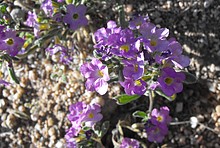Home PageAbout MindatThe Mindat ManualHistory of MindatCopyright StatusWho We AreContact UsAdvertise on Mindat
Donate to MindatCorporate SponsorshipSponsor a PageSponsored PagesMindat AdvertisersAdvertise on Mindat
Learning CenterWhat is a mineral?The most common minerals on earthInformation for EducatorsMindat ArticlesThe ElementsThe Rock H. Currier Digital LibraryGeologic Time
Minerals by PropertiesMinerals by ChemistryAdvanced Locality SearchRandom MineralRandom LocalitySearch by minIDLocalities Near MeSearch ArticlesSearch GlossaryMore Search Options
The Mindat ManualAdd a New PhotoRate PhotosLocality Edit ReportCoordinate Completion ReportAdd Glossary Item
Mining CompaniesStatisticsUsersMineral MuseumsClubs & OrganizationsMineral Shows & EventsThe Mindat DirectoryDevice SettingsThe Mineral Quiz
Photo SearchPhoto GalleriesSearch by ColorNew Photos TodayNew Photos YesterdayMembers' Photo GalleriesPast Photo of the Day GalleryPhotography
╳Discussions
💬 Home🔎 Search📅 LatestGroups
EducationOpen discussion area.Fakes & FraudsOpen discussion area.Field CollectingOpen discussion area.FossilsOpen discussion area.Gems and GemologyOpen discussion area.GeneralOpen discussion area.How to ContributeOpen discussion area.Identity HelpOpen discussion area.Improving Mindat.orgOpen discussion area.LocalitiesOpen discussion area.Lost and Stolen SpecimensOpen discussion area.MarketplaceOpen discussion area.MeteoritesOpen discussion area.Mindat ProductsOpen discussion area.Mineral ExchangesOpen discussion area.Mineral PhotographyOpen discussion area.Mineral ShowsOpen discussion area.Mineralogical ClassificationOpen discussion area.Mineralogy CourseOpen discussion area.MineralsOpen discussion area.Minerals and MuseumsOpen discussion area.PhotosOpen discussion area.Techniques for CollectorsOpen discussion area.The Rock H. Currier Digital LibraryOpen discussion area.UV MineralsOpen discussion area.Recent Images in Discussions
GeneralBacterium isolated from California's Mono Lake has arsenic in its DNA
4th Dec 2010 16:49 UTCUwe Kolitsch Manager
http://news.nationalgeographic.com/news/2010/12/101202-nasa-announcement-arsenic-life-mono-lake-science-space/
http://en.wikipedia.org/wiki/Arsenic_DNA
http://en.wikipedia.org/wiki/GFAJ-1
4th Dec 2010 19:02 UTCRob Woodside 🌟 Manager
4th Dec 2010 20:44 UTCKnut Eldjarn 🌟 Manager
I nice weekend to you all.
Knut
5th Dec 2010 00:07 UTCRob Woodside 🌟 Manager
In these bankrupt times of budget and revenue cutting mania, NASA could do both by cutting its manned space program which has gone nowhere in the last generation and spend more on its robot programs that have been a well spring of discovery and could sorely use the cash.
5th Dec 2010 00:44 UTCRay Hill Expert
one more level off the list of things requiring a definition for life...
yes there are already uniquely based life forms at the vents on the deep sea
floor, and they were the first really big divergences from our basically carbon based life form definition, but I happen to welcome anything that
will bring attention back to the search for other life in the universe, and that broadens our definitions so that we don't actually miss it , when we find it...and of course, keeps the money coming into the space program...and yes Rob, the roboticized remote program is amazing, but it's limitations will eventually push us, if we keep the programs funded, to eventually sending man out there to do a more detailed and flexible research and search on the near planets....
5th Dec 2010 01:02 UTCRob Woodside 🌟 Manager
Now that we've tested the waters by going to the moon, I don't think we should be wasting time and money on manned programs until we can cheaply and reliably orbit Mega ton containers. I'm surprised that the Apollo astronauts aren't all dying from cancer due to their solar wind and cosmic ray exposures.
5th Dec 2010 01:36 UTCNorman King 🌟 Expert
This is the essence of natural selection. I love it, and I'll pay for more research!
Then, maybe from little bits and scraps of knowledge such as this, we'll someday learn the full scope of life and its evolution.

5th Dec 2010 03:30 UTCHarris Mason
Rob you are right they are likely going to have different structures If they had the same structure as our DNA and ATP we could do the same thing, but no one is going to start using arsenates as food preservatives anytime soon. I am sure this will unleash a flurry of research into what the structure of these compounds are, and how the organisms synthesize them.
Also the suggestion that this a waste of NASA funds illustrates a lack of understanding of how much money is allocated for this kind of research. The astrobiology funds are so minor compared to the total NASA budget. And yes NASA is going to play it up for the press. They should! This is cool research and they should be proud of the results. Evolution is amazing!
-Harris
5th Dec 2010 16:03 UTCNorman King 🌟 Expert

5th Dec 2010 17:29 UTCHenry Barwood
5th Dec 2010 18:58 UTCAdam Kelly
Next time my girlfriend says "You can't eat rocks"
Can I direct her to this thread?
AK
5th Dec 2010 19:16 UTCRob Woodside 🌟 Manager
5th Dec 2010 19:51 UTCKnut Eldjarn 🌟 Manager
7th Dec 2010 05:43 UTCPeter Haas
That possibility looks more promising in the light of a new study describing a bacterium isolated from California's Mono Lake that can use arsenic, which is usually poisonous to life, as one of its key nutrient elements. The microbe can even take up arsenic into its biomolecules, replacing phosphorus as a structural building block in DNA and possibly in energy-carrying molecules such as adenosine triphosphate (ATP) as well.
(1) Replacement of phosphate units with arsenate units in biomolecules is not new. There has been research on this topic in the past. If there is a high enough concentration of arsenate offered, it will be inevitably incorporated in biomolecules. The reason for this is simply an equilibrium effect. Phosphate and arsenate are structural analogues and undergo the same reactions. There are only quantitative differences, i.e. the reactivities are not the same.
(2) Whether the arsenic analogues are still functional is a completely different question. In this respect, the bare fact of their existence does mean nothing. There is essentially no basis for the conclusion that "we have a new element in the group of six that, at least for this organism, can sustain life", which is presented later in the article. One may conclude that arsenic is not lethal for those organisms, but "not lethal" and "sustaining life" are just not the same.
(3) Incorporation of arsenate in DNA will result in a defect, because arsenate esters, unlike phosphate esters, are very susceptible to hydrolysis. However, this usually does not have a noticeable effect, (1) because the genetic information is duplicated in the DNA molecule and the second strand will still hold all the information when the first strand is broken, (2) because a break in the backbone will not necessarily result in a break of the strand, since there are enzymes active which do repair such defects. Unlike the chemical modification of a base that holds genetic information (phosphate or arsenate do not), which will inevitably result in a mutation, defects in the backbone are "simple" defects, which occur frequently in all organisms.
(4) The question whether arsenate may also be incorporated in ATP is easily answered, because this topic has been extensively researched in the past (a short explanation is given in Stryer, L.: Biochemistry, Freeman & Company (New York), > 1000 pp.). It does not, but in the presence of arsenate, ATP does not form either. Arsenate breaks the reaction chain by uncoupling the phosphorylation and oxidation steps. Glycolysis still proceeds, but the ATP normally formed in the conversion of the phosphate ester intermediate is lost, because the As analogue is highly labile and will hydrolyze before the enzyme-catalyzed phosphate transfer takes place.
7th Dec 2010 14:26 UTCDavid Von Bargen Manager

7th Dec 2010 14:32 UTCAlfredo Petrov Manager
7th Dec 2010 16:23 UTCRob Woodside 🌟 Manager
In the last few years there's been a couple of Nova programs about the earth's magnetic field. According to these programs the earth's magnetic field protects us from the scorching solar wind that would otherwise blow away our atmosphere. The proof they say is Mars with no large dipole field and little atmosphere. They fail to mention Venus with an oppressive toxic atmosphere and no large dipole field. Once mantle convection developed on Venus it would be amusing to see if a large dipole magnetic field would also appear.
I think the sad thing here is that Science of itself is absolutely fascinating and we don't need alien or doomsday spins to make it so.

7th Dec 2010 20:16 UTCGeorg Graf
my sugestion: Life based on B-N-B-N- chains on planets like Jupiter. E. g. Borazole B3N3H6 is very similar to Benzene C6H6. Of course there are differences, e. g. the B-N bonding is a little bit polarized, the c-c bonding is not.
One day man send a probe to research Jupiters atmosphere. Some month later radio signals from Jupiter are disturbing all radio signals on earth. The signals from Jupiter have structure and content: Numbers; prime numbers; a periodic table of elements (ending with lead); ...
Dreaming in Thale near Goslar of a fantastic future
Georg

9th Dec 2010 15:11 UTCgord major
Since they carried it in their pocket and were not scrupulous in the handling such arsenic build up a tolerance to arsenic.
How does this relate to the MONO arsenic uptake?

9th Dec 2010 16:36 UTCNoah Horwitz
9th Dec 2010 16:45 UTCRob Woodside 🌟 Manager
The initial visitors to venus never made it to the surface, But with that info the Russians made it to the surface and got photos through a diamond window before the lander died within minutes of arrival.
9th Dec 2010 19:01 UTCChris Stefano Expert
9th Dec 2010 19:20 UTCRob Woodside 🌟 Manager
13th Dec 2010 15:38 UTCSteve Hardinger 🌟 Expert
20th Jan 2011 08:25 UTCUwe Kolitsch Manager
For details see
http://ironlisa.com/gfaj/GFAJquestions_Response_16Dec2010.pdf
http://scim.ag/arsenicqa

9th Jul 2012 19:38 UTCAlfredo Petrov Manager
http://www.bbc.co.uk/news/science-environment-18770964
10th Jul 2012 04:54 UTCSteve Hardinger 🌟 Expert

10th Jul 2012 10:10 UTCBart Cannon
This in no way suggests that microbes which metabolize arsenic do not exist.
If there is a chemical bond, a microbe will evolve to exploit the energy potential.
NASA is a shameless promotional organization. They are desperate for news potential.
Could any Mindater do a bioassy on a weathering arsenopyrite sample ?
Bart

10th Jul 2012 12:22 UTCFrank Keutsch Expert
"microprobes which metabolize arsenic"... is your microprobe a living being? I do sometimes have that impression, as they sometimes seem to develop a life of their own.
I have been pondering your question though as it is of considerable commercial interest, e.g., gold mining.
Frank

10th Jul 2012 14:56 UTCBart Cannon
Ooops. I am often in automatic typing mode. I can't type micro without a "probe" completion.
Do not spend any more time contemplating the meaning of my bad spelling !!!
I will edit.
Bart

10th Jul 2012 15:59 UTCFrank Keutsch Expert
no need to edit. I knew exactly what happened and was just pulling your leg...
Frank




Mindat.org is an outreach project of the Hudson Institute of Mineralogy, a 501(c)(3) not-for-profit organization.
Copyright © mindat.org and the Hudson Institute of Mineralogy 1993-2024, except where stated. Most political location boundaries are © OpenStreetMap contributors. Mindat.org relies on the contributions of thousands of members and supporters. Founded in 2000 by Jolyon Ralph.
Privacy Policy - Terms & Conditions - Contact Us / DMCA issues - Report a bug/vulnerability Current server date and time: April 18, 2024 20:51:04
Copyright © mindat.org and the Hudson Institute of Mineralogy 1993-2024, except where stated. Most political location boundaries are © OpenStreetMap contributors. Mindat.org relies on the contributions of thousands of members and supporters. Founded in 2000 by Jolyon Ralph.
Privacy Policy - Terms & Conditions - Contact Us / DMCA issues - Report a bug/vulnerability Current server date and time: April 18, 2024 20:51:04











